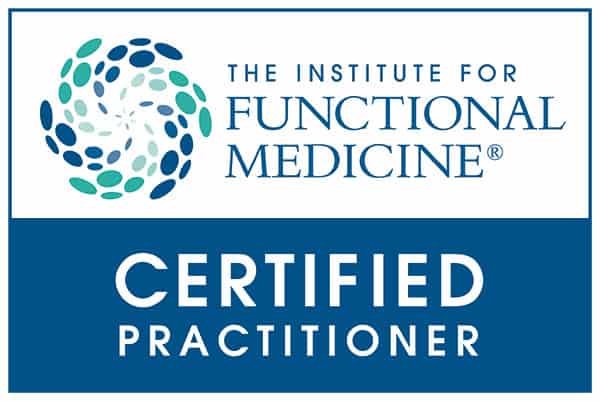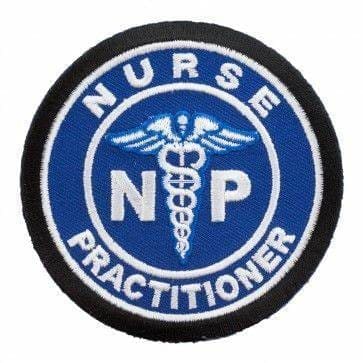
by Dr Alex Jimenez DC, APRN, FNP-BC, CFMP, IFMCP | UTEP (Local) RSS
In just his second meet of the outdoor season, UTEP freshman Emmanuel Korir clocked a blistering 44.67 in the 400m to break a 37-year old stadium record (Billy Mullins, 45.03, USC, 1980) at Kidd Field Saturday afternoon.
Korir’s time of 44.67 ranks first in the nation and is the second-fastest time in the world. The Kenyan was just .09 seconds away from Bert Cameron’s school record established back in 1981. Teammate Michael Saruni followed by claiming silver with at time of 45.69, which is the 10th fastest time in the nation. Seniors Asa Guevara (46.81) and James Bias (47.24) notched the third and fourth spots, respectively.
Sophomore Tobi Amusan claimed gold in both the 100m hurdles (12.67) and the 200m (22.60). Amusan already has the fastest time in the nation (12.63) in the 100m hurdles and is now tied for third in the country in the 200m.
UTEP claimed the top four spots in the women’s 1,500m run with Lilian Koech (4:29.15), Linda Cheruiyot (4:29.38), Winny Koech (4:34.08) and Gladys Jerotich (4:46.89).
In the field events, senior Fayon Gonzales notched two second-place showings in the hammer throw (52.58m) and the discus throw (42.95m). Adebola Akomolafe claimed fourth (48.07m) in the hammer throw and third (40.89m) in the discus. Samantha Hall notched gold in the shot put after throwing for 14.30m.
In the men’s hammer throw, Karol Koncos threw for a personal-best 63.43m. Koncos ranks third in Conference USA. Brandon Moss claimed gold in the long jump with a mark of 7.20m and Austin Ondijo leaped over 1.89m in the high jump. In the men’s 1500m seniors Cosmas Boit, (3:50.99) and Daniel Cheruiyot (3:54.23) went 1-2 while sophomore Antony Kosgei (3:55.60) snagged the bronze.
Lucia Mokrasova placed second in the high jump with a mark of 1.65m, while Israel Ramsay (5.89m) and Tyler Ragin (5.62m) took fifth in the long jump. In the women’s 400m Ada Benjamin (53:39) edged out Central Arizona’s Shawkia Iddrisu (54:53) to secure the first-place finish.
In the 4x400m relay, UTEP’s Yanique Bennett, Madison Gibson, Brittney Adams and Imani Adams teamed up to cross the line in 3:48.71 to finish in second place.
The UTEP track and field team will return to action April 28-29 at the Brutus Hamilton Open in Berkley, Calif. For live updates and breaking news be sure to follow @UTEPTrack on Twitter.
UTEP’s Tobi Amusan in the Women’s 200 meter dash at the 2017 UTEP Invitational, Kidd Field El Paso, TX
UTEP’s Tobi Amusan in the Women’s 200 meter dash at the 2017 UTEP Invitational, Kidd Field El Paso, TX
2017 UTEP Invitational, Kidd Field El Paso, TX
2017 UTEP Invitational, Kidd Field El Paso, TX
2017 UTEP Invitational, Kidd Field El Paso, TX
2017 UTEP Invitational, Kidd Field El Paso, TX
UTEP’s Tobi Amusan in the Women’s 200 meter dash at the 2017 UTEP Invitational, Kidd Field El Paso, TX
2017 UTEP Invitational, Kidd Field El Paso, TX
2017 UTEP Invitational, Kidd Field El Paso, TX
UTEP’s Tobi Amusan in the Women’s 200 meter dash at the 2017 UTEP Invitational, Kidd Field El Paso, TX
2017 UTEP Invitational, Kidd Field El Paso, TX
2017 UTEP Invitational, Kidd Field El Paso, TX
2017 UTEP Invitational, Kidd Field El Paso, TX
2017 UTEP Invitational, Kidd Field El Paso, TX
UTEP’s Tobi Amusan in the Women’s 200 meter dash at the 2017 UTEP Invitational, Kidd Field El Paso, TX
UTEP’s Tobi Amusan in the Women’s 100 Meter Hurdles at the 2017 UTEP Invitational, Kidd Field El Paso, TX
2017 UTEP Invitational, Kidd Field El Paso, TX
2017 UTEP Invitational, Kidd Field El Paso, TX
UTEP’s Tobi Amusan in the Women’s 100 Meter Hurdles at the 2017 UTEP Invitational, Kidd Field El Paso, TX
2017 UTEP Invitational, Kidd Field El Paso, TX
UTEP’s Tobi Amusan in the Women’s 100 Meter Hurdles at the 2017 UTEP Invitational, Kidd Field El Paso, TX
UTEP’s Tobi Amusan in the Women’s 200 meter dash at the 2017 UTEP Invitational, Kidd Field El Paso, TX
UTEP’s Tobi Amusan in the Women’s 200 meter dash at the 2017 UTEP Invitational, Kidd Field El Paso, TX
UTEP’s Tobi Amusan in the Women’s 100 Meter Hurdles at the 2017 UTEP Invitational, Kidd Field El Paso, TX
UTEP’s Tobi Amusan in the Women’s 100 Meter Hurdles at the 2017 UTEP Invitational, Kidd Field El Paso, TX
UTEP’s Tobi Amusan in the Women’s 100 Meter Hurdles at the 2017 UTEP Invitational, Kidd Field El Paso, TX
UTEP’s Tobi Amusan in the Women’s 100 Meter Hurdles at the 2017 UTEP Invitational, Kidd Field El Paso, TX
2017 UTEP Invitational, Kidd Field El Paso, TX
2017 UTEP Invitational, Kidd Field El Paso, TX
UTEP’s Tobi Amusan in the Women’s 200 meter dash at the 2017 UTEP Invitational, Kidd Field El Paso, TX
2017 UTEP Invitational, Kidd Field El Paso, TX
2017 UTEP Invitational, Kidd Field El Paso, TX
2017 UTEP Invitational, Kidd Field El Paso, TX
UTEP’s Tobi Amusan in the Women’s 100 Meter Hurdles at the 2017 UTEP Invitational, Kidd Field El Paso, TX
2017 UTEP Invitational, Kidd Field El Paso, TX
2017 UTEP Invitational, Kidd Field El Paso, TX
UTEP’s Tobi Amusan in the Women’s 100 Meter Hurdles at the 2017 UTEP Invitational, Kidd Field El Paso, TX
UTEP’s Tobi Amusan in the Women’s 100 Meter Hurdles at the 2017 UTEP Invitational, Kidd Field El Paso, TX
2017 UTEP Invitational, Kidd Field El Paso, TX
2017 UTEP Invitational, Kidd Field El Paso, TX
UTEP’s Tobi Amusan in the Women’s 200 meter dash at the 2017 UTEP Invitational, Kidd Field El Paso, TX
2017 UTEP Invitational, Kidd Field El Paso, TX
2017 UTEP Invitational, Kidd Field El Paso, TX
UTEP’s Tobi Amusan in the Women’s 100 Meter Hurdles at the 2017 UTEP Invitational, Kidd Field El Paso, TX
2017 UTEP Invitational, Kidd Field El Paso, TX
2017 UTEP Invitational, Kidd Field El Paso, TX
2017 UTEP Invitational, Kidd Field El Paso, TX
UTEP’s Tobi Amusan in the Women’s 200 meter dash at the 2017 UTEP Invitational, Kidd Field El Paso, TX
2017 UTEP Invitational, Kidd Field El Paso, TX
2017 UTEP Invitational, Kidd Field El Paso, TX

by Dr Alex Jimenez DC, APRN, FNP-BC, CFMP, IFMCP | UTEP (Local) RSS
The UTEP men’s golf team will join 12 other teams at the 2017 C-USA Men’s Golf Championship, teeing off Sunday morning at the Texarkana Country Club in Texarkana, Arkansas.
The teams will play the par 72, 6,969-yard course over three days, April 23-25, beginning with 54 holes of stroke play. Following the results of stroke play, the top four teams will advance to a seeded match play round on Wednesday, April 26, with the team champion earning C-USA’s automatic berth to the NCAA Regionals.
The Miners will begin to tee off at 9:20 a.m. CT (8:20 a.m. MT) on hole No. 1, along side top-seeded Middle Tennessee and North Texas. Seeding is based on current Golfstat rankings, Middle Tennessee is ranked No. 53, while UTEP sits at No. 55 and North Texas is No. 62 out of 292 teams. Rice and UTSA will tee off on hole No. 1, while defending champion LA Tech will tee off with Southern Miss and WKU on hole No. 10, all at 8 a.m. CT. At the 8:40 a.m. CT mark, Charlotte and UAB will begin their play on the first tee. Rounding out the teams will be Marshall, FAU and Old Dominion with a 8:50 a.m. CT start from the No. 10 tee.
“National ranking, its really been us and Middle Tennessee bouncing back and forth between the top ranked schools in our conference,” sixth-year head coach Scott Lieberwirth said. “But our conference does have quite a few schools that may not be ranked quite as high, but they’re still strong quality programs. North Texas is very good, Charlotte is good year in and year out, UAB has been a power team in our league for a long time; and then you can mix in others like UTSA, and Rice, who just came off a win.
“There’s a lot of teams that are capable of winning this championship. Especially with us going into match play and having that portion decide who our team champion is, I’d say there’s about eight or nine teams that have a legitimate chance [to win], its just a matter of who plays better.”
The core five vying for the championship for the Miners will be Frederik Dreier, Charles Corner, Aaron Terrazas, Nicklas Pihl, and Andreas Sorensen. In the 11 tournaments played, the at least three of the five have played in every tournament. Terrazas transferred from Oklahoma and began playing in the spring.
“We are going strong into the tournament instead of reeling into the tournament, so we feel like we’ve got a very strong and a very deep core,” Lieberwirth said. “That should help us not just in the stroke play, but if we were to make it in the match play portion of the championship, we should be able to be highly competitive. From a depth perspective, we’re the best that we’ve been all year.”
Dreier, Corner, Pihl, and Sorensen all participated in the 2016 C-USA Championships last year, helping the Miners to a sixth place finish.
“We have a very similar team to last year,” Lieberwirth said. “We have a majority of our starters returning, they’re all one year older and defiantly have all improved. Last year we had a nice team, but this year I think we’ve really broken out and individually. We’ve had guys really have some great performances in the fall and spring. We’ve been very consistent top to bottom in the spring.”
Dreier, the lone senior on the team, is the reigning C-USA Golfer of the Year, only the fourth golfer in program history to earn the honor. The Birkeroed, Denmark, native leads the team this season with total top-10 finishes (six) as well as the squad’s lowest round (64) in the final round of the Price’s Give ‘Em Five Invitational. He will enter his final conference tournament, where he placed sixth last year to earn his first ever berth to the NCAA Regional tournament, where he finished in 57th.
“He’s been fantastic, watching him grow from his freshman and sophomore year when he was just so close to being really good, and then really turning the corner his junior year and continuing that into his senior year,” Lieberwirth said of Dreier. “He’s been a leader on and off the golf course for us. He’s defiantly a guy that all the players and us coaches really look up to and respect.”
Corner earned his first ever C-USA Golfer of the Week honor on April 12 after his stellar play led to an eighth place finish and helped his team to a seventh place finish at the prestigious 71st Western Intercollegiate. The team bested then-No. 17 Texas, No. 25 Arizona State and No. 32 San Diego State after shooting 1,084 (361-356-367) in the 15-team field, which included eight nationally-ranked teams. Of the 96 players, Corner’s score was better than 19 players ranked in the Golfstat Top 100, including six of the top-10 players. The junior from Cayuga, Ontario, Canada has recorded a 72.5 scoring average, third-best on the UTEP squad, and tallied three top-10 finishes this year in 10 tournaments, with his work at the Western Intercollegiate marking the first time he was the top finisher for UTEP this year.
Terrazas joined the Miners this spring after transferring from Oklahoma and has found his name in the top-250 of Golfweek collegiate rankings. The sophomore had his best showing in the Orange and Blue at the Lone Star Invitational, where he tied for sixth with 7-under 209.
Pihl has recorded back-to-back top finishes for the Miners at the National Invitational Tournament and the Border Olympics. The junior boasts a 73.3 stroke average in 29 rounds played while finishing in the top-50 of each event eight times.
Sorensen has two runner-up showings under his belt from the fall season as well as eight top-50 finishes in 11 events. Along side three top finishes for the Miners, the sophomore has a 72.75 stroke average and shot a career-low round of 66 in the opening round of the Price’s Give ‘Em Five Invitational. He was named the C-USA Golfer of the Week for the week of Sept. 14, his first ever, after his runner-up performance at the Gene Miranda Invitational helped the Miners to their first team title of the fall. He was on the C-USA All-Freshman team last year.
“Charles Corner has put together a quiet, very good year,” Lieberwirth said. “Aaron Terrazas, a transfer from Oklahoma who came in spring for us, has already got his name ranked in the top 250 in the country just in the five tournaments that he’s played and started for us, he’s been great too. Nicklas Pihl, this is probably his best semester from a consistency stand point, he’s always been right there between the top-10 and no worse than middle of the pack. We’ve got a bunch of guys that we can count on and that we are going to give us good, consistent performances.
“That’s probably the biggest difference between this year’s team and previous teams. Previous year’s teams were more of a wild card, we knew we had some talent, we just didn’t know which guy would show up on any given day. This team is fairly predictable, we know we’re going to get great effort and we’ve seen very good results.”
The conference tournament will be the beginning of the end of an incredible season for the Miners, which saw three tournament titles in the fall and 10 top-10 finishes in eleven tournaments.
“We had some really outstanding individual performances that allowed us to win,” Lieberwirth said. “This spring, we haven’t had those top-10, top five, individual performances as often, but more tournaments than not, we’ve had all five starters in the top half of the field. From depth perspective, that helps us. We just need one or two of those guys to really catch fire, that’s when we’ll be real dangerous.”
The Miners also have eyes set beyond the conference tournament, at the NCAA Regional tournament, where the goal is to make it as a team.
“These are extremely competitive players, which makes it a real joy to coach,” Lieberwirth said. “When you have players that are as or even more competitive than the coach is, then you know you have a good team on your hands. That’s exactly how these guys are. They want to win for the team but they want to win individually too. I think that’s good, you want to have those individual goals because if you perform well individually, then the team is going to take care of itself.”

by Dr Alex Jimenez DC, APRN, FNP-BC, CFMP, IFMCP | UTEP (Local) RSS
The UTEP track and field team will host its final regular season meet on Saturday at Kidd Field, starting with the running events at 10:00 a.m. MT and running events at 2 :00 p.m.
The UTEP track and field team will honor 15 seniors prior to the running events.
Two seniors Fayon Gonzales and Abedola Akomolafe will compete in the hammer throw set for 10:00 a.m. The pair will join Samantha Hall in the discus throw at 2:15 p.m. Hall earned Conference USA athlete of the week honors last week and ranks first in league.
In the long jump, Israel Ramsay will compete at 2:30 p.m. Ramsay ranks eighth in C-USA with a mark of 5.88m posted at the UTEP Springtime.
In the track events, Truphena Sum will compete in the 1,500m run set for 2:10 p.m. Yanique Bennett will take the track at 2:30 p.m. in the 100m hurdles along with sophomore Tobi Amusan. Amusan opened the season at home notching the fastest time in the nation (12.63).
Ada Benjamin, who currently leads the league in the 400m will race at 2:45 p.m. Brittney Adams will see action in both the 100m and the 400m hurdles, along with Yanique Bennett at 3:45 p.m.
Florence Uwakwe compete in the 200m at 4:05 p.m. Uwakwe will run the anchor leg of the 4x400m relay, which ranks third in the league.
On the men’s side, Kevin Rincon will compete in the hammer throw starting at 11:30 a.m. Brandon Moss will compete in the long jump set for 2:30 p.m.
Seniors, Cosmas Boit and Evans Kiprono will compete in the 1,500m run at 2:20 p.m. Yinka Oyebanjo-Odofin will race in the 400m hurdles starting at 3:55 p.m.
James Bias will run in the 400m at 3:15 p.m. along with Emmanuel Korir and Michael Saruni. This will be the second meet for Korir this outdoor season after running the fastest time in the country in the 800m last week at the Jim Bush Invitational.
Saruni has competed in three different events claiming the number one spot in all three races. His highlight of the season so far was at the Texas Relays where he won the 800m and posted the third-fastest time in the nation.
This will be the last home meet of the regular season before the Miners travel to Berkley, Calif. for the Brutus Hamilton Open on April 28-29 UTEP host the 2017 C-USA Outdoor Championships May 11-14.
For live updates and breaking news follow @UTEPTrack on Twitter.

by Dr Alex Jimenez DC, APRN, FNP-BC, CFMP, IFMCP | Chiropractic, Physical Rehabilitation, Spine Care, Wellness
El Paso, TX. Chiropractor Dr. Alex Jimenez examines good health and wellness.
Most individuals will experience neck or back pain at some time in their own own lives. Neck pain and back are among the leading causes of disability worldwide, along with the number of cases is increasing. Some factors behind this are increased usage of cellular devices bad position, and unhealthy lifestyle choices.
Though it’s not necessarily possible to stop neck and back pain, you will find steps individuals can take to help decrease the chance it is going to occur.
Why good posture?

One of the most important approaches to ensure your spine stays healthy would be to keep good posture. A healthy back has three natural curves� an external curve at the upper back an inward curve at the neck, and an inward curve at the low back. Proper bearing helps maintain these curves that are natural and puts minimal pressure in your joints. Defective bearing does the opposite. It may stress or pull muscles, causing pain and musculoskeletal imbalances in the back, neck, and extremities. Some typical postural blunders rounding your shoulders are positioning your face too much forward, and slouching so you lose the normal curve in the lower back.
Cellular Devices &�Neck Pain

The increasing use of cellular devices can bring about inferior spine health, influencing our posture and body mechanics in ways that are unhealthy. Kenneth K. Hansraj, MD, the Chief of Spine Surgery at New York Spine Surgery and Rehabilitation Medicine, created a computer model of the cervical spine that demonstrated how use of mobile devices directly contributes to neck pull. In an article published in Surgical Technology International, Dr. Hansraj, MD, revealed that neck pull increases as the forward angle of the head increases, as it does when you look down at your cell phone or tablet. As you lean your head, you round another aspect of poor position, your shoulders. All this surplus strain creates additional wear and tear on the structures of the neck, upper spine and back, and can result in spinal degeneration that could need surgery.
Body Mechanics &�Prevention Tips

Good posture and placement is particularly important when you’re bending over, squatting, and when you are lifting things. When lifting boxes or alternative things you should avoid twisting your body. But it also is crucial to keep good posture while standing and sitting. It really is a lot more crucial that you develop a good ergonomic working arrangement to safeguard your spine with people spending increasing quantities of time at work,. Over time, poor sitting posture and workplace ergonomics can damage spinal structures and contribute to persistent or persistent back and neck pain.
Sleep Time

One other place people spend a sizable percentage of the time is in bed. That makes it vital to truly have a mattress that enables you to have a supporting and restful slumber. The identical natural spinal alignment you have is maintained by a mattress that is good when standing and will help prevent back pain.
Eat Well &�Exercise Frequently
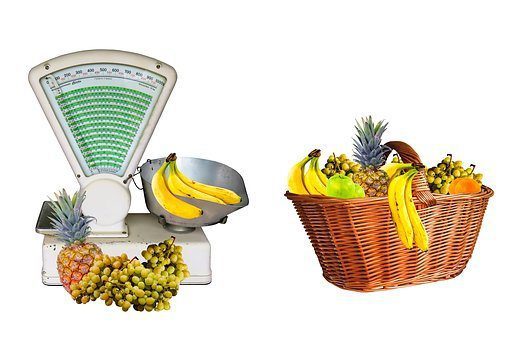
The diet and exercise choices you make might assist you to protect your back. Exercise can help prevent back pain and neck pain by strengthening the muscles supporting your vertebrae. Strength training, flexibility training, and aerobic exercise are part of a healthy exercise routine, and every type of exercise contributes to spinal health. Great nutrition also is crucial to helping us reach our optimum well-being and feel our best. A nutritious diet along with exercise also assist you to keep a healthier weight, that is just another approach to simply help make sure your back is not overstrained.
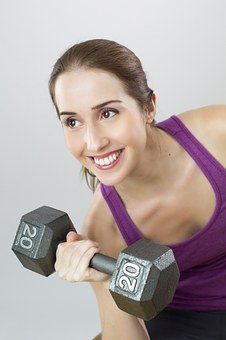
Smoking, Your Brain, Chronic Back Pain & Bone Health

Another lifestyle alternative that’s damaging to spine health is cigarette smoking. Researchers from Northwestern University conducted a study demonstrating that smokers are three times more likely than nonsmokers to develop chronic back pain. �Smoking affects the brain,� according to scientist Bogdan Petre, who headed the study, which was published on the internet in the journal Human Brain Mapping. �We found that it appears to make people less resilient to an episode of pain and changes the way the brain responds to back pain.�
Smoking also reduces bone density, which increases the risk for osteoporosis along with other degenerative spine conditions, and it can reduce the success of spinal fusion. People who are facing fusion or any back surgery should make every endeavor to avoid smoking. The associated dangers will reduce and raise the probability of an effective spinal fusion surgery.

Call Today!

by Dr Alex Jimenez DC, APRN, FNP-BC, CFMP, IFMCP | UTEP (Local) RSS
Related Articles
Match-ups against both New Mexico and New Mexico State in the same season for the first time in program history and a visit from defending Conference USA Tournament Champion Charlotte highlight the 2017 UTEP soccer schedule, as announced by head coach Kevin Cross Friday.
Eleven of the 19 games in the regular season will be held at University Field, including the first meeting with the Lobos since 2007. UTEP went 7-3 at home in 2016, aided by a league-leading best average of 540 fans. It marked the sixth time since joining C-USA that the Orange and Blue have paced the league in attendance.
�We are excited for the 2017 soccer season,� Cross said.��It will be very challenging as it always is in Conference USA soccer.�We have some tough non-conference matches highlighted by an away game to start the season at New Mexico State.�The New Mexico Lobos are back on our schedule so we can renew that rivalry, and we have a home game against Stephen F. Austin, a perennial NCAA tournament participant.�We will look to build upon last year�s great season with the help and support of the best fans in Conference USA.�We are very thankful we get to play soccer in El Paso!�
The Miners will tune up for the campaign with an exhibition home match against Pac-12 power Arizona (Aug. 13)
The 2017 season begins in earnest with the Miners venturing to Las Cruces to lock up with NM State (Aug. 18) in the FirstLight Federal Credit Union Battle of I-10. It is the first time since 2012 that UTEP will christen the campaign on the road. The only other non-conference road games on the schedule will be at Wyoming (Sept. 1) and at Idaho State (Sept. 3).
UTEP will welcome Abilene Christian (Aug. 20) to town for its home opener. The contest will be the first of three straight and six of eight in the Sun City to wrap up non-conference play. The Miners will also play host to CSU Bakersfield (Aug. 25), I-25 rival New Mexico (Aug. 27), Incarnate Word (Sept. 8), Stephen F. Austin (Sept. 10) and New Mexico Highlands (Sept. 13).
With CSU Bakersfield being the first Friday home game, that game will also serve as the date for the annual UTEP Soccer Alumni Association tailgate, sponsored by Rudy�s Country Store and Bar-B-Q.
For the fourth straight year and the fifth time in the past six years, UTEP will begin C-USA play on the road with a match-up at Southern Miss (Sept. 17). The other league road tilts will be at defending regular-season champion North Texas (Oct. 6), at Rice (Oct. 8), at Florida Atlantic (Oct. 22) and at UTSA (Oct. 27).
After the game at USM, the Miners will have three straight and five of seven contests in the Sun City. The stretch starts with UAB (Sept. 24). The other four league home games will be against defending C-USA tournament champion Charlotte (Sept. 29), Old Dominion (Oct. 1), Middle Tennessee (Oct. 15) and Marshall (Oct. 19).
FAU will serve as the host for the 2017 C-USA Championships (Nov. 1-Quarterfinals, Nov. 3-Semifinals and Nov. 5-Final). Last year the seventh-seeded Miners made a run to the semifinals before falling to host and eventual champion Charlotte.
2017 UTEP Soccer Schedule
August 13 (Sun.)��������� Arizona (Exhibition)���������������������������������������� 1 p.m.
August 18�������������������� @ New Mexico State���������������������������������������� 5 p.m.
August 20�������������������� Abilene Christian�������������������������������������������� 1 p.m.�
August 25�������������������� CSU Bakersfield���������������������������������������������� 7 p.m.
August 27�������������������� New Mexico����������������������������������������������������� 1 p.m.
September 1���������������� @ Wyoming����������������������������������������������������� 4:30 p.m.
September 3���������������� @ Idaho State�������������������������������������������������� 1 p.m.
September 8���������������� Incarnate Word������������������������������������� � � � � ��7 p.m.
September 10�������������� Stephen F. Austin������������������������������������������� 12 p.m.
September 13 (Weds.)� New Mexico Highlands� � � � � � � � � � � � � � � � � � �7 p.m.
September 17 (Sun.)����� @ Southern Miss*�������������������������������������������� 12 p.m.
September 24 (Sun.)���� UAB*��������������������������������������������������������������� 1 p.m.
September 29�������������� Charlotte*�������������������������������������������������������� 7 p.m.
October 1�������������������� Old Dominion*������������������������������������������������ 1 p.m.
October 6�������������������� @ North Texas*������������������������������������������������ 6 p.m.
October 8�������������������� @ Rice*����������������������������������������������������������� 12 p.m.
October 15 (Sun.)�������� Middle Tennessee*������������������������������������������ 1 pm
October 19 (Thurs.)����� Marshall*��������������������������������������������������������� 7 pm
October 22������������������� @Florida Atlantic*�������������������������������������������� 11 a.m.
October 27 (Fri.)����������� @ UTSA*��������������������������������������������� ����������� 6 p.m.
November 1����������������� Conference USA Quarter Finals @ FAU������������� TBA
November 3����������������� Conference USA Semi Finals @ FAU���������������� TBA
November 5����������������� Conference USA Final @ FAU��������������������������� TBA
Home games in bold
*Denotes C-USA contest
All Times Mountain
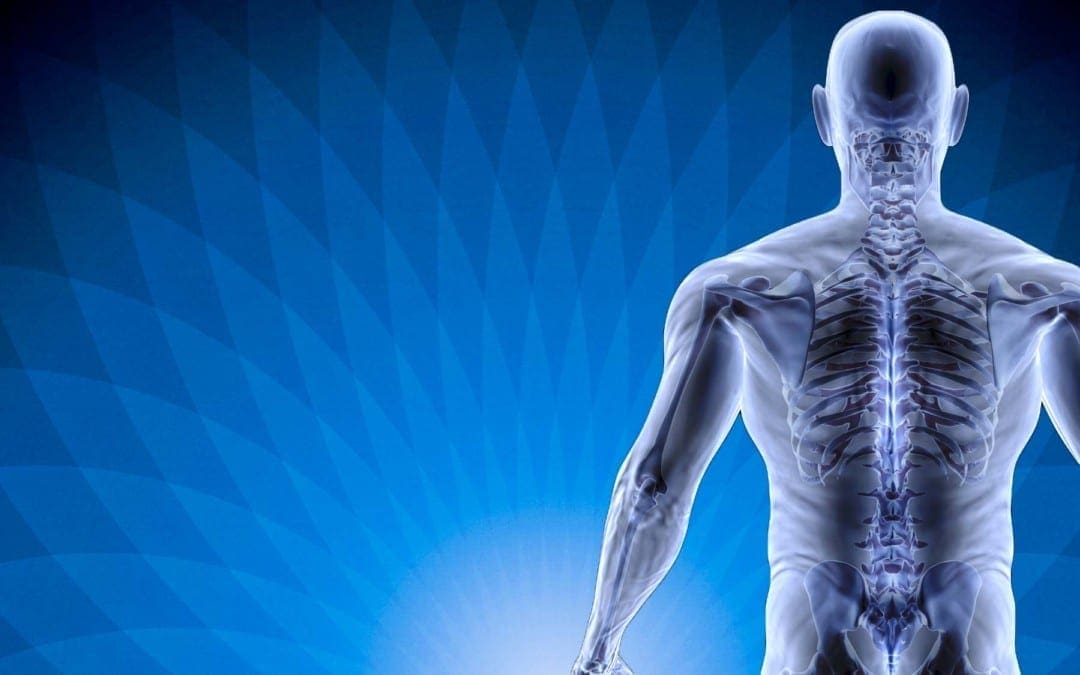
by Dr Alex Jimenez DC, APRN, FNP-BC, CFMP, IFMCP | Chiropractic, Chronic Back Pain, Migraines, Neck Pain
El Paso, TX. Chiropractor Dr. Alex Jimenez investigates pain, the spine and its connection to internal organs.
Right after I had my first son, I suffered from headaches and some digestive issues. I had never had digestive issues before, but I passed it off as a side effect of giving birth to a living being. I also blamed the pressures of being in school and raising a small child.
My husband went to a chiropractor to treat some pain in his hands, and that is when I decided to try it as well. The chiropractor re-aligned my spine and, with weekly visits, I was feeling much better.
When my family and I moved to South Korea, I could not find a chiropractor. I did, however, find an excellent acupuncturist that had his office two blocks away from my front door. Instead of working on my spine, the acupuncturist worked on the muscles around my spine.
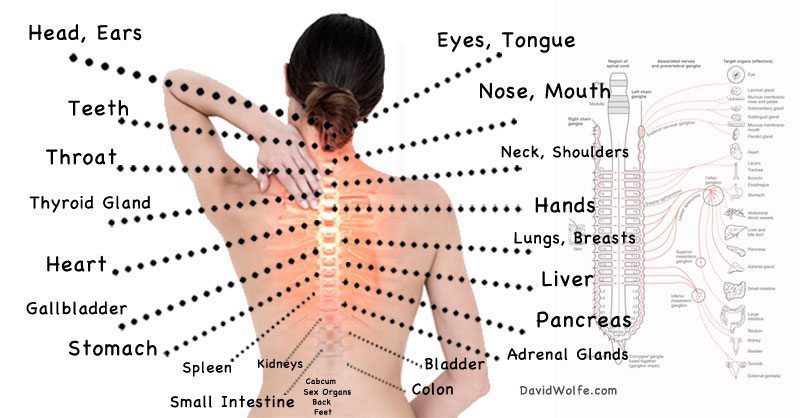
I feel the results of both were the same. I always felt much better when I took the time to take care of my spine and nervous system.
This is because all our organs receive messages from our brain via our spinal cord. The lungs know to breath in and out because of the messages they receive from the brain. The heart beats because of these messages as well. Every organ in our body is connected to the brain and blocking this connection�even a little�can cause serious health issues.
Some health problems are easily felt like numbness in the fingers or a headache. Some troubles are not so apparent like digestive issues or kidney problems. If the spine is out of order, the organs will feel it.
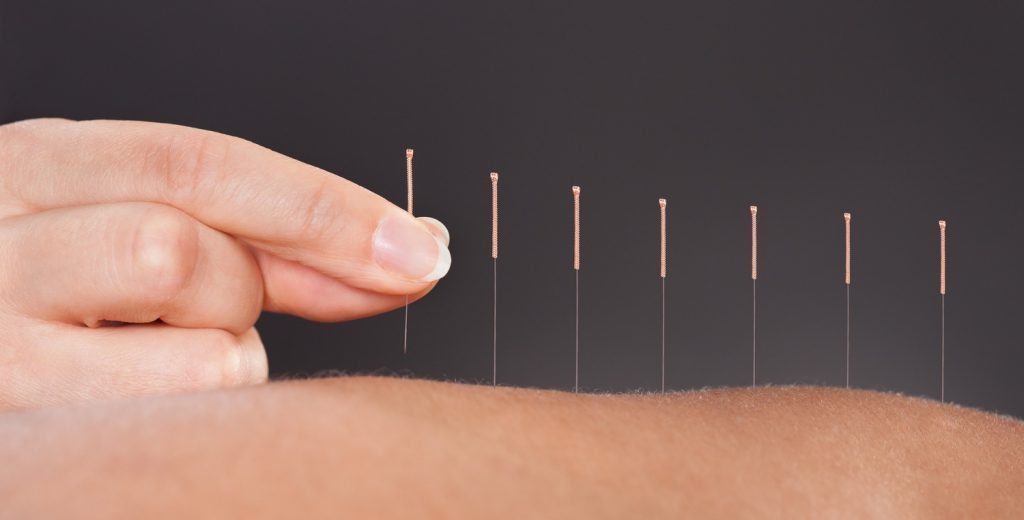
It Is Important To Take Care Of The Spine Every Day

If one takes a look at the image above, one can see how the nerves from the spinal cord connect to specific areas of the body. A chiropractor or acupuncturist will be able to spot spinal problems and fix them over time. This is what they are trained to do.
Here Are Some Tips To Take Care Of The Spine From Spine Health:
- Sitting correctly or using an ergonomic chair while at work is a good way to take care of the spine.
- Exercise abs and back daily to strengthen the muscles around the spine and keep it in place.
- Take time to get a massage, see a chiropractor, or an acupuncturist. This will help the spine stay in the correct shape.
- Wear shoes that support the feet and feel comfortable. Uncomfortable shoes, especially pumps, will injure the back and spine.
- Sleep with the spine in mind. Choose a mattress and pillow that supports the spine and try to sleep in a natural position. Also, try sleeping on your arm to get a nice straight spine when lying on your side rather than using a pillow that can tilt your head up and kink your neck.
If one is suffering back pain, it is important to seek professional help. Spine problems, like a pinched nerve, if not taken care of, can become extremely severe. The spinal cord controls the body. In order to be in the best of health, the spine needs to be in good health.
Take care of�your spine and it will take care of you all the years of your life.

Call Today!
Source: David Wolfe

by Dr Alex Jimenez DC, APRN, FNP-BC, CFMP, IFMCP | Fitness, Wellness
El Paso, TX. Chiropractor Dr. Alex Jimenez looks at exercise and fitness from a chiropractic perspective.
The advantages of exercise are plenty: Exercise might help prevent numerous conditions � to osteoporosis � from heart attacks and it can also prevent back pain and neck pain.
Cardiovascular, strength training, and flexibility training exercise all play a significant part in a healthy exercise routine, and each form of exercise contributes to spinal health.
Training &�Stretches
Flexibility is something most people take for granted when they’re young, but growing elderly tends to make the significance of flexibility and stretching training a lot more clear as range of movement begins to fall. Yet, stretching and flexibility training may be incorporated into your fitness routine at any given age, and you may reap the benefits for a long time. Flexibility training can boost your mobility, balance, equilibrium, and posture, which will assist you to avoid back and neck pain. Pilates all, yoga, and flexibility training classes might help you enhance your stretches technique and lead to long-term flexibility.
Weight Training &�Core Strengthening For Back Pain
You could believe strenuous exercise and strength training tend to be more prone to result in a back injury than to prevent one, but your overall spinal health along with function cans significantly enhance. With feeble back and abdominal muscles, on the other hand, you happen to be more inclined to encounter a back strain injury. For the best results, you will want to combine weightlifting with strengthening exercises that use your own personal body weight as opposition to maintain a healthier neck and back. Make sure do not fail core muscles such as transverse abdominals and the external obliques, and to alter your work outs.
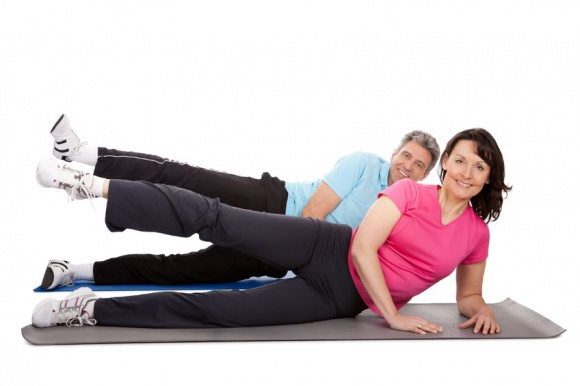
Cardiovascular Exercise
Cardiovascular exercise has many health benefits, and it’s also an essential element of a well-rounded workout routine. One of the key advantages to cardiovascular exercise is the way it can simply help with weight reduction. Being obese or overweight can lead to worsening of spinal circumstances and puts extra strain on your back, so discarding some extra pounds with only a little help from cardiovascular activity can mean great things for your back and spine. Cardiovascular exercise also helps you build endurance, which can be essential for long-term health and will help with rehabilitation from spinal and back injuries. Naturally, cardio has wonderful effects on different aspects of well-being too, from enhancing mood and enhancing cholesterol amounts to lowering blood pressure. Because endorphin levels are boosted by cardiovascular exercise, it can also help alleviate outward indications of depression, which may add to the long-term pain experienced by some people. Like that were quality slumber is promoted by cardiovascular activity, and also a good night�s remainder is essential for back and spine well-being.
Exercise &�Aging
It really is particularly important as we age, although exercise is very important at all ages. These deteriorations can impede, although decline of flexibility, range of motion, and function are a part of the natural aging process. Although vigorous action may be hard amongst aged adults, aerobic activity that is light still has tremendous health benefits, specially in comparison to no activity in the slightest. The quantity of exercise one needs so that you can see health benefits might surprise you � you are able to exercise at an intensity level which allows you to carry on a casual conversation and still see health benefits.1 If you have a few other health issues, such as for instance diabetes, high blood pressure, or a heart condition, specific activities may well not be healthy for you. Request your doctor about your planned exercise routine, in case you do not feel comfortable exercising by yourself, and consider exercising in the existence of a physical exercise device. Don’t forget to tune in to your own body, and cease exercise at once should you experience pain aside from muscle soreness that is typical.
The SpineUniverse Exercise Center shows you the top back stretches and neck stretches to maintain your spine powerful and healthy. Discover the crucial advantages of exercise as how to keep healthy as well.

Call Today!

by Dr Alex Jimenez DC, APRN, FNP-BC, CFMP, IFMCP | Chiropractic, Sciatica, Sciatica Nerve Pain, Spine Care, Treatments
El Paso, TX. Chiropractor Dr. Alex Jimenez listens in on how chiropractors can help with sciatica.
Dr. Joseph Licitra DC, a chiropractor that serves Clifton, NJ as well as Montclair, Bloomfield, and Passaic, recently discussed sciatica on a local cable show. Dr. Licitra says that chiropractors can help treat sciatic nerve pain.
Clifton, United States

Dr. Joseph Licitra DC, the owner of a chiropractic practice that serves Clifton, New Jersey and surrounding areas such as Montclair, Bloomfield, and Passaic, recently discussed sciatica on a local cable show called �Meet Clifton.� Those interested in learning more about the challenges of sciatica and how it can be treated can view an exclusive video clip for free on Dr. Licitra�s website: http://www.josephlicitra.com/sciatica
In addition to speaking about the prevalence of sciatica in America, Dr. Licitra also touched upon the economic consequences of the debilitating condition. An interesting fact explored during his presentation brought to light the extent of which sciatica negatively affects employee attendance in the workplace. Dr. Licitra said: �People with sciatica have difficulty sitting and bending and therefore they can�t go to work. There is tremendous economic strain on the cities, on the companies, and on the families.�
The Causes Of Sciatica
Sciatic nerve pain can stem from many different things such as repetitive bending, direct trauma to the spine, as well as a sedentary lifestyle.
How chiropractors can help � There is hope for people who suffer from sciatica. Chiropractors can determine the origin of the sciatic condition and then focus on balancing out the spine to get the bones in correct alignment. Chiropractors like Dr. Licitra who specialize in kinesiology will also focus on the musculature to pinpoint the cause(s) of sciatic pain.
Dr. Licitra has been in practice for over 30 years and has worked on many professional athletes such as the New York Giants and the National Hockey League. His practice is now offering free consultations to new patients interested in receiving treatment for sciatica, as well as to patients suffering from other health conditions like neck or back pain, shoulder pain, and even migraines.
Struggling With Sciatica?
If you are experiencing pain that radiates from the back or buttocks all the way down the legs, you may have a common condition called sciatica. Many people in Clinton suffer with the pain of sciatica and may never achieve a long-term solution. An untreated sciatic condition can continue to worsen and make the daily tasks of living go from difficult to nearly impossible. Fortunately, chiropractic treatment can help you overcome this debilitating condition.
Sciatica In Clifton
Sciatica, also known as sciatic neuralgia, is a condition that causes pain in the lower back, down the back of the leg, and into the foot. It can make sitting and standing for long periods of time difficult and can lead to weakness, tingling, and numbness in the leg and foot. It will often come and go throughout a person’s lifetime, causing periods of varying degrees of pain and discomfort. If left untreated, sciatic pain will generally grow worse and the nerve can become permanently damaged.
The reason why the pain travels so far, radiating up and down the legs and back, is due to the compression of the sciatic nerve which is the longest nerve in the body. This nerve originates in the lumbar spine and extends into the buttocks before traveling down the leg to the ankle and foot. When the vertebrae in the lower back are compressed, the roots of the sciatic nerve can become pinched and irritated which is what causes the pain.
How Do You Develop Sciatica?
There are a number of factors that can lead to sciatica. It is most commonly caused by disc injuries and bulges. In this occurrence, the disc presses against the nerve root causing sciatic pain. Disc Injuries can occur because of poor posture, repetitive use injuries, and accidents. Sciatica is also common when there are subluxations (misalignments) in the spine due to postural issues, pregnancy, or trauma. Some patients report simply bending over to pick up a piece of paper and then being suddenly hit with extreme pain. The reality, however, is that the spinal condition was probably already developing for quite some time before the triggering incident occurred.
Chiropractic Treatment For Sciatica
Chiropractors in Clifton are highly trained to zero in on the source of the sciatica and to work with the patient in determining the most suitable approach to treatment. After a thorough assessment of the individual’s unique issue, gentle adjustments are made that will allow the body to recover its natural alignment.
Some people respond very quickly while others take more time to recover. It really depends on the condition of the disc or the joints that the chiropractor has to correct. In most cases, the longer the issue persists, the longer it will take to achieve correction. The great news is that it typically takes less time to fix an issue like this than it took to create it in the first place. Once the position of the spine and discs are corrected, patients often report improvements in their overall health. If you are experiencing symptoms of sciatica, please call our team at Joseph Licitra, DC today.

Call Today!
For more information and access to the video, visit Dr. Licitra�s website at http://www.josephlicitra.com/sciatica
For more information, please visit http://josephlicitra.com
Source: PressCable
Release ID: 185891

by Dr Alex Jimenez DC, APRN, FNP-BC, CFMP, IFMCP | Natural Health, Wellness
Could that glass of Chardonnay affect the condition of your skin?
Maybe, according to new research that found women with certain drinking patterns had a higher risk of developing rosacea, an inflammatory skin condition.
“We found white wine and liquor were significantly associated with a higher risk of rosacea,” said study senior author Wen-Qing Li. He’s an assistant professor of dermatology and epidemiology at Brown University.
Rosacea causes redness and flushing on the face and the neck. In some forms, acnelike outbreaks can form, and visible blood vessels can appear.
Genetics can play a role in the development of rosacea. In those with acnelike rosacea, their immune system may be reacting to a single bacterium, according to the American Academy of Dermatology.
While red wine is often pinpointed as the beverage that can trigger rosacea flushing, Li said that that information tends to come from reports by patients who already have the disorder.
The new research focused on alcohol’s role in the development of rosacea. Li’s team evaluated nearly 83,000 women enrolled in the Nurses’ Health Study II from 1991 to 2005.
The researchers collected information on alcohol intake every four years during a follow-up of 14 years. Over that time, nearly 5,000 new cases of rosacea occurred.
“For white wine, compared to never drinkers, [those who drank] one to three drinks per month had a 14 percent increased risk of rosacea. For five or more white wines a week, risk increased by 49 percent,” Li said.
For liquor, five or more drinks a week raised the risk of developing rosacea by 28 percent, the study found.
Li could not say if the link would hold true for men, as the study included only women. And, he points out that “it is just an association, it is not a causal relationship.”
Li isn’t sure exactly why white wine and liquor seem to increase the risk of rosacea. However, the researchers speculated that the white wine and liquor may weaken the immune system and contribute to the dilation of blood vessels.
For now, Li said, the message is to make physicians and consumers aware of the link.
The researchers also suspect that there are different biological reasons why white wine and liquor seem to increase the development of rosacea and why red wine seems to exacerbate the condition. But they don’t yet know what those differences are, the study authors said.
Dr. Carolyn Goh, a dermatologist at UCLA Medical Center, said the new findings add to knowledge about rosacea.
“It’s interesting that they found a difference between different types of alcohol,” she said.
One of the strengths of the research is the large number of women in the study, Goh said.
Meanwhile, she said, it’s known that drinking alcohol can make rosacea flare up in those already diagnosed. “In the past, people thought red wine would cause more flushing than white wine,” she said.
Besides alcohol, other common triggers in those who already have rosacea include sunlight, caffeine, hot and spicy foods, Goh said. People with the condition report different triggers, she said, so that list may not apply to all patients.
Treatments include topical creams and ointments, Goh said. Laser treatment can help the blood vessels that stay visible after periods of flushing. For patients who have pimples associated with rosacea, oral antibiotics can help, she said.
The study is published online April 20 in the Journal of the American Academy of Dermatology.

by Dr Alex Jimenez DC, APRN, FNP-BC, CFMP, IFMCP | Anti Aging
One in five Americans has hearing loss so severe that it interferes with communication, said a 2011 study published in Archives of Internal Medicine. But there may be many more people who have “hidden hearing loss,” but remain undiagnosed because the damage wasn’t detected by commonly used hearing tests, according to a new study published in the journal Frontiers in Neuroscience.
People who have hidden hearing loss appear to have normal hearing when their hearing is tested using audiograms — the gold standard for measuring hearing — where hearing is typically tested in a quiet room.
The reason some forms of hearing loss may go unrecognized in the clinic is that hearing involves a complex partnership between the ear and the brain. Researchers found that the central auditory system can compensate for significant damage to the inner ear by turning up its volume control, partially overcoming the deficiency, says study lead author Richard Salvi.
“You can have tremendous damage to inner hair cells in the ear that transmit information to the brain and still have a normal audiogram,” says Salvi. “But people with this type of damage have difficulty hearing in certain situations, like hearing speech in a noisy room. Their thresholds appear normal. So they’re sent home.”
The reason hearing loss isn’t detected lies in the way hearing signals travel to the brain: About 95 percent of sound input to the brain comes from the ear’s inner hair cells.
“These inner hair cells are like spark plugs in an 8-cylinder engine,” says Salvi. “A car won’t run well if you remove half of those spark plugs, but people can still present with normal hearing thresholds if they’ve lost half or even three-quarters of their inner hair cells.”
Ear damage reduces the signal that goes the brain. That results in problems hearing, but that’s not what’s happening here, because the brain “has a central gain control, like a radio, the listener can turn up the volume control to better hear a distant station,” Salvi says.
Sound is converted to neural activity by the inner hair cells in the auditory part of the ear, called the cochlea.
The neural signals then travel from the cochlea to the auditory nerve and into the central auditory pathway of the brain. Halfway up the auditory pathway the information is relayed into a structure known as the inferior colliculus, before finally arriving at the auditory cortex in the brain, where interpretation of things like speech take place.
For people with inner hair cell loss, sound is less accurately converted to neural activity in the cochlea, but it is amplified as it travels. Once the signal gets high enough to stimulate neurons in the brain, “It’s like your brain has a hearing aid that turns up the volume,” Salvi said.
Salvi says it’s unknown how many people might have this type of hearing loss, but many older people have difficulty hearing in a noisy environment.
Spotting hidden hearing loss could be as simple as adding background noise to hearing tests.
An experimental drug called LY411575 may offer hope to people with hearing loss caused by a loss of sensory hair cells in the inner ear. The tiny hairs are vital to hearing, since sound vibrations agitate them, causing them to send signals to the brain. When the hairs are destroyed, the brain no longer receives signals that result in hearing.
The new drug works by inhibiting a protein called Notch, which keeps stem cells in the inner ear — or cochlea — from developing into new sensory hair cells. In a study of sound-deafened mice, hearing was improved in the areas where the hair cells were replaced.







































































